Fetal ovine skeletal and cardiac muscle transcriptomics are differentially altered by increased maternal cortisol during gestation
- PMID: 32116114
- PMCID: PMC7191423
- DOI: 10.1152/physiolgenomics.00096.2019
Fetal ovine skeletal and cardiac muscle transcriptomics are differentially altered by increased maternal cortisol during gestation
Abstract
We have previously found that in utero exposure to excess maternal cortisol (1 mg/kg/day) in late gestation increases the incidence of stillbirth during labor and produces fetal bradycardia at birth. In the interventricular septum, mitochondrial DNA (mt-DNA) was decreased, and transcriptomics and metabolomics were consistent with altered mitochondrial metabolism. The present study uses transcriptomics to model effects of increased maternal cortisol on fetal biceps femoris. Transcriptomic modeling revealed that pathways related to mitochondrial metabolism were downregulated, whereas pathways for regulation of reactive oxygen species and activation of the apoptotic cascade were upregulated. Mt-DNA and the protein levels of cytochrome C were significantly decreased in the biceps femoris. RT-PCR validation of the pathways confirmed a significant decrease in SLC2A4 mRNA levels and a significant increase in PDK4, TXNIP, ANGPTL4 mRNA levels, suggesting that insulin sensitivity of the biceps femoris muscle may be reduced in cortisol offspring. We also tested for changes in gene expression in diaphragm by rt-PCR. PDK4, TXNIP, and ANGPTL4 mRNA were also increased in the diaphragm, but SLC2A4, cytochrome C protein, and mt-DNA were unchanged. Comparison of the change in gene expression in biceps femoris to that in cardiac interventricular septum and left ventricle showed few common genes and little overlap in specific metabolic or signaling pathways, despite reduction in mt-DNA in both heart and biceps femoris. Our results suggest that glucocorticoid exposure alters expression of nuclear genes important to mitochondrial activity and oxidative stress in both cardiac and skeletal muscle tissues, but that these effects are tissue-specific.
Keywords: cortisol; fetus; heart; metabolism; mt-DNA; skeletal muscle.
Conflict of interest statement
No conflicts of interest, financial or otherwise, are declared by the author(s).
Figures
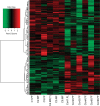
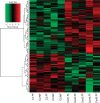
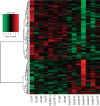
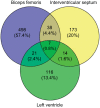
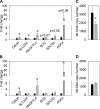
Similar articles
-
Mechanisms for the adverse effects of late gestational increases in maternal cortisol on the heart revealed by transcriptomic analyses of the fetal septum.Physiol Genomics. 2014 Aug 1;46(15):547-59. doi: 10.1152/physiolgenomics.00009.2014. Epub 2014 May 27. Physiol Genomics. 2014. PMID: 24867915 Free PMC article.
-
Mechanisms of in utero cortisol effects on the newborn heart revealed by transcriptomic modeling.Am J Physiol Regul Integr Comp Physiol. 2019 Apr 1;316(4):R323-R337. doi: 10.1152/ajpregu.00322.2018. Epub 2019 Jan 9. Am J Physiol Regul Integr Comp Physiol. 2019. PMID: 30624972 Free PMC article.
-
Chronic maternal cortisol excess during late gestation leads to metabolic alterations in the newborn heart.Am J Physiol Endocrinol Metab. 2019 Mar 1;316(3):E546-E556. doi: 10.1152/ajpendo.00386.2018. Epub 2019 Jan 8. Am J Physiol Endocrinol Metab. 2019. PMID: 30620638 Free PMC article.
-
Fetal and obstetrics manifestations of mitochondrial diseases.J Transl Med. 2024 Sep 23;22(1):853. doi: 10.1186/s12967-024-05633-6. J Transl Med. 2024. PMID: 39313811 Free PMC article. Review.
-
The role of metabolism in cardiac development.Curr Top Dev Biol. 2024;156:201-243. doi: 10.1016/bs.ctdb.2024.01.005. Epub 2024 Feb 9. Curr Top Dev Biol. 2024. PMID: 38556424 Review.
Cited by
-
Chronic maternal hypercortisolemia models stress-induced adverse birth outcome and altered cardiac function in newborn lambs.Am J Physiol Regul Integr Comp Physiol. 2022 Aug 1;323(2):R193-R203. doi: 10.1152/ajpregu.00041.2022. Epub 2022 Jun 7. Am J Physiol Regul Integr Comp Physiol. 2022. PMID: 35670476 Free PMC article.
-
Pharmacokinetic and Biochemical Profiling of Sodium Dichloroacetate in Pregnant Ewes and Fetuses.Drug Metab Dispos. 2020 Jun;49(6):451-458. doi: 10.1124/dmd.120.000330. Epub 2021 Apr 2. Drug Metab Dispos. 2020. PMID: 33811107 Free PMC article.
-
Tissue-specific responses that constrain glucose oxidation and increase lactate production with the severity of hypoxemia in fetal sheep.Am J Physiol Endocrinol Metab. 2022 Feb 1;322(2):E181-E196. doi: 10.1152/ajpendo.00382.2021. Epub 2021 Dec 27. Am J Physiol Endocrinol Metab. 2022. PMID: 34957858 Free PMC article.
-
Metabolic Consequences of Glucocorticoid Exposure before Birth.Nutrients. 2022 May 30;14(11):2304. doi: 10.3390/nu14112304. Nutrients. 2022. PMID: 35684104 Free PMC article. Review.
-
Maternal Undernutrition during Pregnancy Alters Amino Acid Metabolism and Gene Expression Associated with Energy Metabolism and Angiogenesis in Fetal Calf Muscle.Metabolites. 2021 Aug 28;11(9):582. doi: 10.3390/metabo11090582. Metabolites. 2021. PMID: 34564398 Free PMC article.
References
Publication types
MeSH terms
Substances
Grants and funding
LinkOut - more resources
Full Text Sources
Medical
Molecular Biology Databases

